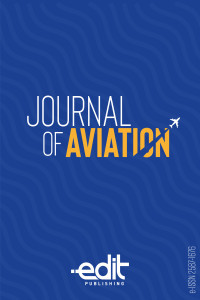On Stationarity of Variance Calculation Series
On Stationarity of Variance Calculation Series
Stationarity, Heteroscedasticity, Variance, Mean, Mean Time Between Failure (MTBF) Reliability,
___
- Dickey, D. A., and W. A. Fuller. (1979). Distribution of the Estimators for Autoregressive Time Series with a Unit Root. Journal of the American Statistical Association. Vol. 74, pp. 427-431.
- Engle, R. (1988). Autoregressive Conditional Heteroscedasticity with Estimates of the Variance of United Kingdom Inflation. Econometrica. Vol. 96, pp. 893-920.
- Kipiński, L., König, R., Sielużycki, C., & Kordecki, W. (2011). Application of modern tests for stationarity to single-trial MEG data: transferring powerful statistical tools from econometrics to neuroscience. Biological cybernetics, 105(3-4), 183–195.
- Kwiatkowski, D., P. C. B. Phillips, P. Schmidt and Y. Shin. (1992) Testing the Null Hypothesis of Stationarity against the Alternative of a Unit Root. Journal of Econometrics. Vol. 54, pp. 159-178.
- Machiwal, D., & Sharma, A (2008). Testing homogeneity, stationarity and trend in climatic series at Udaipur – a case study. Journal of Agrometeorology, 10(2), 127–135.
- Marcus J Chambers, (1996). Fractional integration, trend stationarity and difference stationarity Evidence from some U.K. macroeconomic time series, Economics Letters, Volume 50, Issue 1, Pages 19-24.
- Parey, S., Hoang, T.T.H. & Dacunha-Castelle, D. (2019). Future high-temperature extremes and stationarity. Nat Hazards 98, 1115–1134.
- Ulrich K. Müller, (2005). Size and power of tests of stationarity in highly autocorrelated time series, Journal of Econometrics, Volume 128, Issue 2, Pages 195-213.
- Yucesan, O., Özkil, A. & Özbek, E. (2021). A Reliability Assessment of an Industrial Communication Protocol on a Windows OS Embedded PC for an Oil Rig Control Application, Journal of Science, Technology and Engineering Research, 2 (2), 22-30.
- Yucesan, O., Özkil, A. & Özbek, M. E. (2022). Validity of Exponential Distribution for Modelling Inter-Failure Arrival Times of Windows based Industrial Process Control Data Exchange, Journal of Science, Technology and Engineering Research, 3 (1), 1-8.
- Zeybekoğlu, U. & Aktürk, G. (2022). Homogeneity and Trend Analysis of Temperature Series in Hirfanli Dam Basin. Türk Doğa ve Fen Dergisi, 11 (1), 49-58.
- Yayın Aralığı: Yılda 3 Sayı
- Başlangıç: 2017
- Yayıncı: Vedat Veli ÇAY
Ersin ÖKTEMER, Fatih Alpaslan KAZAN
Virtual Training Applications in Aviation BITE Test Application
Yunus SARIKAYA, Hakan AYDOĞAN, Faruk ARAS
On Stationarity of Variance Calculation Series
Stock Price Prediction with Box-Jenkins Models: Delta Airlines Application
Design and Simulation of a Conformal Micro-Strip Patch Antenna at GNSS L1/ E1 Frequency Band
Innovative Morphing UAV Design and Manufacture
Air-traffic Flow Prediction with Deep Learning: A Case Study for Diyarbakır Airport
Air Cargo Carrier Selection: The Case of Turkey
Serdar ALNIPAK, Yusuf Can TUNABOYLU, Sefa CEYHAN
The Importance of Periodic Oral and Dental Health Examination of Aircrew
Gürkan Raşit BAYAR, Güneş SANAL, Dr. Öğr. Üyesi Şükrü Hakan GÜNDÜZ, Abdurrahman Engin DEMİR
A PESTEL Analysis of The Impacts of COVID-19 Crisis on Air Transportation Sector's Future
